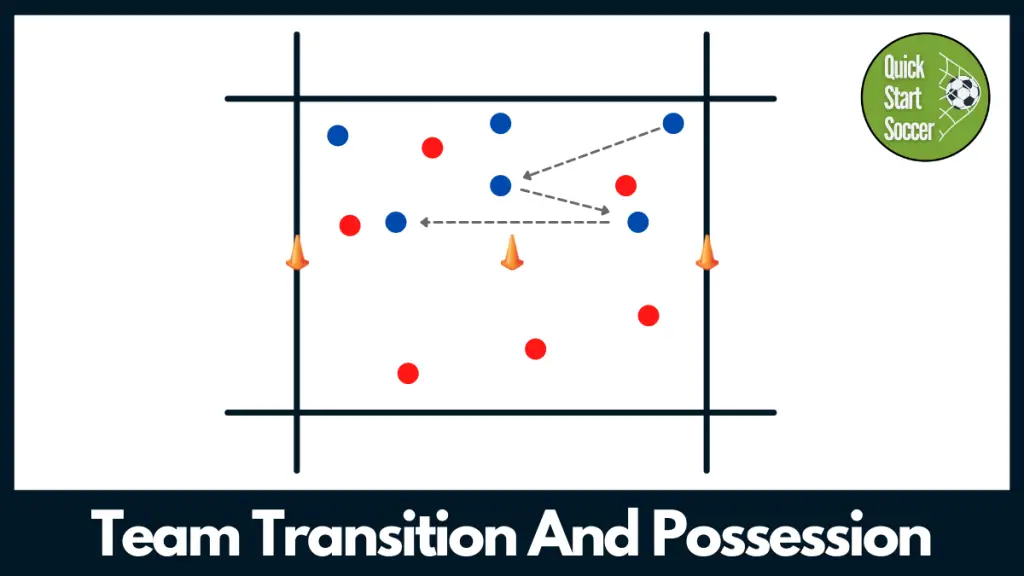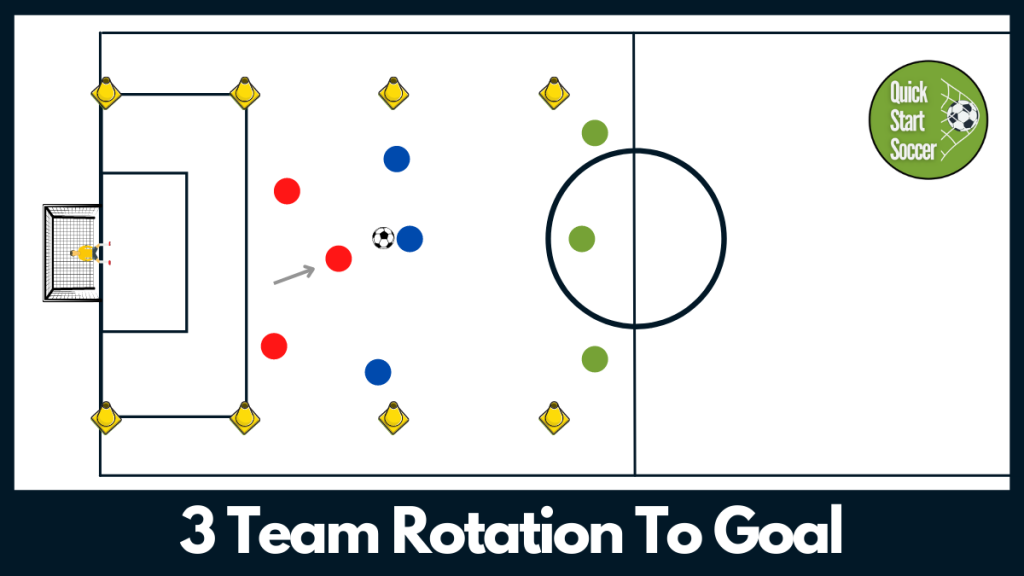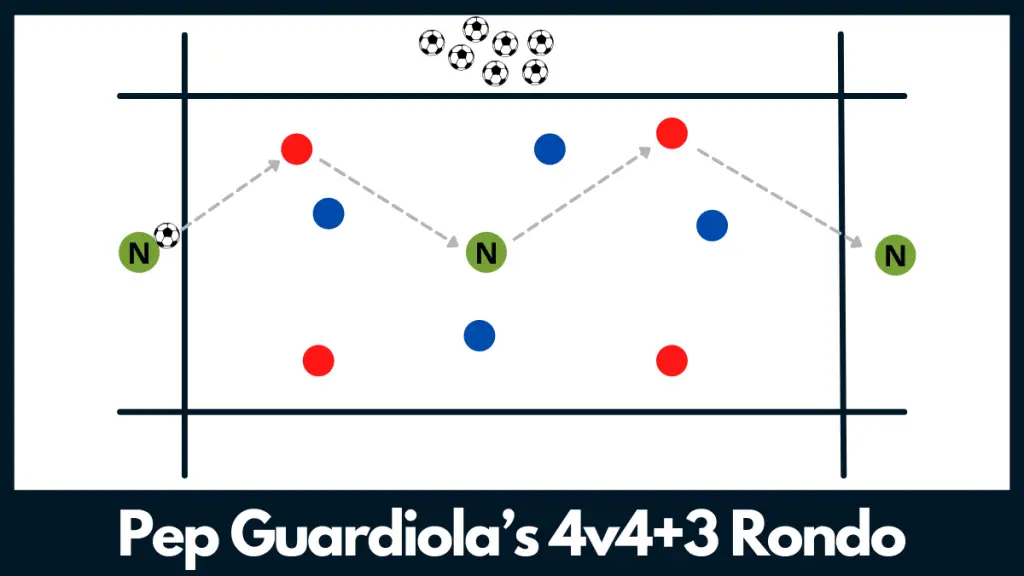Transition In Soccer – Everything You Need To Know
Transition in soccer is both incredibly important and often overlooked by coaches when planning their sessions. In this post, we’ll explain exactly what transition in soccer is and the different types of transition and transition phases a soccer coach should be focusing on. We’ll also provide some useful tips on how to coach transition and share our favorite soccer transition drills you can use in your sessions to practice this essential part of the game.
What Is Transition In Soccer?
Transition in soccer refers to a team recognizing and responding immediately to winning or losing possession of the ball. For example, if an attacking team loses possession of the ball, they must quickly transition from attacking to defending. And if a defending team wins possession of the ball, they must quickly transition from defending to attacking. The first few seconds after a team wins or loses possession are the most important. If a team can transition quickly, it can give them a vital competitive edge over their opponents.
Types Of Transition In Soccer
There are two types of transitions in soccer. These are the Attacking Transition and the Defending Transition. These two types of transition make up two of the ‘four phases of play’, the other two being the Attacking Phase and the Defending Phase. All of these phases/transitions can take part on any part of the field and are simply defined by which team is in possession of the ball. Let’s take a look at the two types of transition in more detail.
Attacking Transition
Attacking transition in soccer refers to what a team does immediately after winning possession of the ball. As soon as a team gains possession, they must instantly switch from defending to attacking. If a team can do this quickly, they have the opportunity to attack and get behind the other team’s defense before they have time to respond.
The primary focus in attacking transitions is on the player who wins the ball, their decision-making process, and what they subsequently do once they gain possession of the ball. The remaining player’s teammates should try and support them in attack as a collective unit.
Defensive Transition
Defensive transition in soccer refers to what a team does immediately after losing the ball. As soon as an attacking team loses the ball, they have to instantly transition from attacking to defending. If a team can do this quickly and transition at a greater speed than their opponents, it is more likely that they can win the ball back again before their opponents can mount an attack.
The primary focus in defensive transitions is on the player closest to where the ball is lost. They should provide pressure and try and prevent the attack before it starts while the remaining player’s teammates support them by defending collectively as a compact unit.
How To Coach Players To Transition
Although there are plenty of soccer drills to specifically coach the act of transitioning in soccer, you can do it in almost any drill that involves opposing players and a ball. It’s also a great topic to focus on during a regular unconditioned game during practice. Here are useful tips on how to coach players to transition quickly in both attack and defense:
Coaching Attacking Transition
When coaching attacking transitions, it’s important to let players know that the first thing to do in an attacking transition is to immediately look for the option that progresses them furthest down the field. This can be either a pass or a dribble which takes them closer to their opponent’s goal. If no forward options are available, the player should ensure he/she is aware of the positions of their teammates so that they can maintain possession of the ball until an option becomes available.
The second and third attackers should look to break away from players marking them and make forward runs behind the defense to give the player with the ball an option to play forward. This is particularly important in attacking transitions in the final third as this is a great opportunity to score a goal.
Coaching Defensive Transition
When coaching defensive transitions, be sure to let players know that if they lose possession of the ball in a 1v1 challenge, they should show aggression and tenacity to immediately try and win it back as soon as possible. The second and third defenders, and other players close to the ball, should also help to press and pressure the ball in an attempt to cut off immediate passing lanes and options for their opponents. In 11v11 matches, encourage players further away from the ball to do recovery runs back and try and get goalside to provide cover for their teammates.
Drills To Coach Transitions In Soccer
Transition Drill 1

This small-sided game is a fantastic drill you can use to coach transitions at soccer practice. Players will compete in two teams and must quickly transition from attacking to defending and vice versa.
To set up the drill, make a 20×30 yard grid with small cones and use more cones to divide the field in half so there are two sides to the grid. Next, split the players into two teams and place one team on either side of the grid.
To begin, the blue team starts with the ball and must try and make five passes in a row in their half of the grid to score a point. The red team sends three defenders over to try and win possession of the ball. If they win possession of the ball, they must quickly transition from defense to attack by passing the ball to their side of the grid and then try and make 5 passes. At the same time, the blue team must quickly transition from attacking to defense and send three players over to the other side of the grid to try and win back the ball.
This is a fast-paced, continuous game that is great for practicing defensive and attacking transitions. For coaching points and variations of this drill, you can check out the full transitions game drill here.
Transition Drill 2

This next drill for coaching transitioning in soccer is a fast and exciting game in which three teams take turns attacking and defending a large goal.
To set up the drill, set up one full-size goal at one end of a 30×40 yard grid. Choose one player to be the goalkeeper and divide the remaining players into three equal teams. In the drill diagram above, the three teams are red, blue, and green. The green team is the ‘resting team’ outside the grid. The blue team is the attacking team and the red team is the defending team.
The drill begins with the blue team attacking the goal and trying to score as the red team tries to defend the goal and win possession of the ball. If the red team wins possession, they must try and make a pass to one of the players on the ‘resting team’ (green). If they succeed, the green team transitions to become the attacking team, the blue team transitions from attacking to defense, and the red team become the resting team. If the attacking team scores a goal, they get a new ball and get to attack again.
This drill is great for coaching both attacking and defensive transitions and can be used with players of all abilities from the aged 9 to 18. To read coaching points and variations of this drill, check out the full 3 team transition drill here.
Transition Drill 3

This next soccer transition drill is one of Pep Guardiola’s favorite rondo drills. In this drill, players will be constantly transitioning from defense to attack as they try to make five successful passes with the assistance of neutral players.
To set up the drill, make an 18×25 yard grid with small cones. Next choose three players to be the ‘neutral players’ and have one stand in the middle of the grid, and the other two on the line at each end of the grid. Divide the remaining players into two teams of four.
To begin, the coach plays a ball into the grid and the two teams compete for possession. Once a team gets possession they must try and make five passes to score a point. The team in possession of the ball can use the neutral players and passes to them count as a successful pass. Teams get one point for every five passes that they make.
When a team loses/wins possession of the ball, they must quickly transition from attacking to defending or vice versa. This drill is a fast-paced and super fun drill for practicing transitions in soccer. To read coaching points and various progressions of this drill, check out the full rondo drill here.
Useful Coaching Resources
Thanks for reading. I hope you have a better understanding of the meaning of transition in soccer, the different types of transitions and how to coach players about transitions in your training sessions. Before you go, don’t forget to check out our extensive library of free soccer drills you can use in your next training session.


